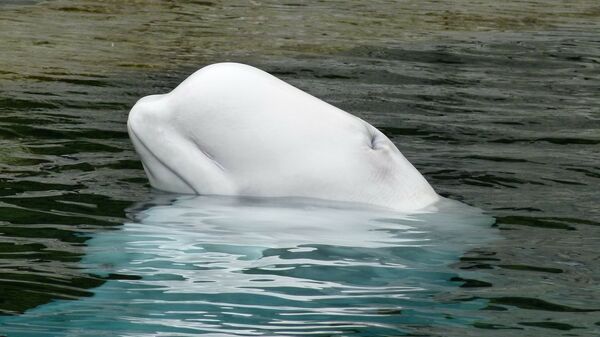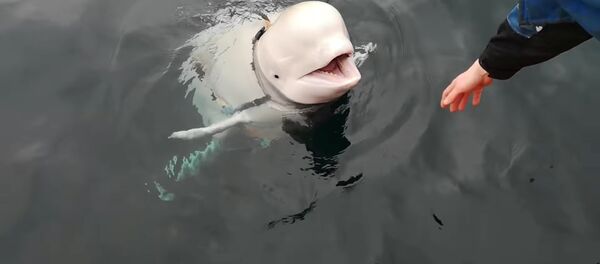The beluga intruder, spotted by local fishermen in northern Norway last week wearing a harness with GoPro cameras attached, was proclaimed to be a Russian spy by many Western media outlets after the discovery of an "Equipment St. Petersburg" inscription, written in English, on one of its harness clips.
Navy Seals
That said, several countries, including Russia and the United States, have indeed been known to use marine mammals for military applications, with programs in so-called marine 'biotechnical systems' going back to at least the 1960s. The USSR, for its part, established research institutes to study the potential use of sea creatures across at least three locations –in the Russian Far East, in Murmansk in northwest Russia, and Sevastopol on the Black Sea coast, with the latter serving as the main training center, lavishly equipped with special pens, swimming pools, laboratory facilities, research vessels and mini subs.
The Murmansk Marine Biological Institute, mentioned by the media as being the likely center where the errant beluga found off the Norwegian coast was trained, has engaged in marine mammal research since the mid-1980s, but has focused its efforts on seals, and sea lions, rather than belugas. These animals have been taught to neutralize sea mines, inspect underwater equipment and pipelines, engage in search and rescue missions, and detect alien objects in territories that they've been assigned to guard.
In a 2017 report by Zvezda, the official television network of the Russian Defence Ministry, it was noted that while beluga whales were initially seen as a promising way of guarding the entrances to military harbours, given their very sensitive natural sonar systems, efforts to train them were hampered by a host of problems, ranging from equipment shortages to difficulties for the trainers working with the animals. In their natural habitats, water temperatures are known drop to as low as one degree Celsius, and the surrounding air temperatures often hit —30. This, Zvezda noted, prompted researchers to abandon beluga training in the early 1990s to concentrate on seals.
Last year, the Institute shared unique footage of the fruits of its labour, with its seals trained for about a year and half before going on to serve in the Navy for 15, 20 or even 30 years, engaging in a wide variety of missions.
Guard Dolphins
The US military is no stranger to the use of marine mammals, running its own secretive 'Marine Mammal Program' in San Diego, California, and using dozens of dolphins and sea lions to help guard Naval Base Kitsap, a huge naval station outside Seattle, Washington that stores nuclear weapons.
The US began experiments in the field in the Pacific Islands and Hawaii in the 1960s, and in the 1970s, used trained dolphins to guard the port of Cam Ranh Bay in South Vietnam from saboteurs during the Vietnam War. In 2003, the US reportedly deployed combat dolphins to help demine the Umm Qasr port in Iraq following the US invasion. Over a decade later, in 2015, the US reportedly sent about 20 dolphins and two dozen sea lions for drills in the Black Sea, flying them in from San Diego.
Currently, the US Navy is estimated to have about two dozen dolphins for demining, along with 50 dolphins and 30 sea lions for other purposes. The program is believed to have an annual price tag of about $20 million.
As noted above, the main Soviet (and since 1991, Ukrainian/Russian) facility for marine mammal training is in Crimea, with Soviet authorities establishing a research center to train dolphins to guard the entrance to Sevastopol Bay, home of the Black Sea Fleet, in the early 1970s.
After the collapse of the Soviet Union, the training facility fell under Kiev's jurisdiction, with a cash-strapped Ukraine reportedly selling off some of the guard dolphins to Iran in the year 2000, with others 'demobilised' for use in swim therapy for tourists. In 2014, following the Crimean referendum to break off from Ukraine and reunify with Russia, the remaining 15 bottlenose dolphins at the military facility were transferred to the Russian Black Sea Fleet, with most of their trainers joining them.


